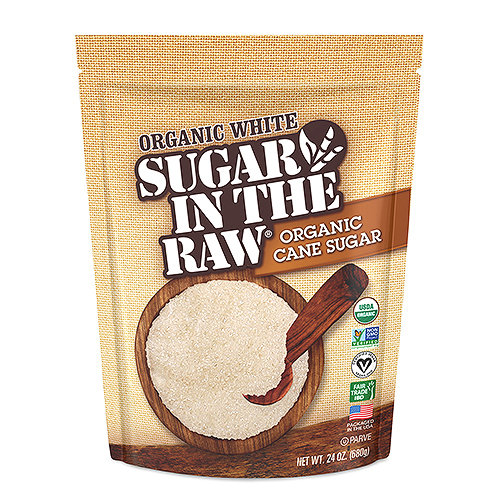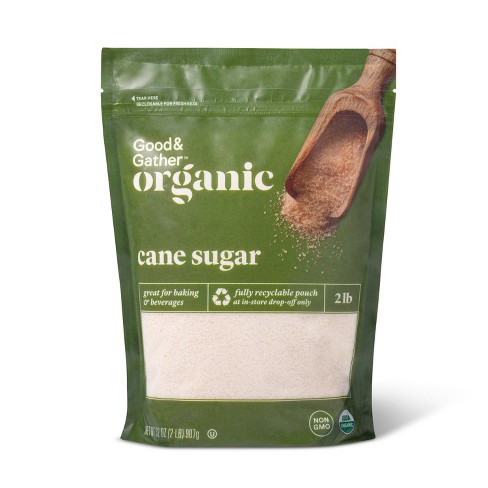Discovering the Comprehensive Tips Associated With Cane Sugar Processing From Harvesting to Refinement
The process of walking stick sugar production includes a collection of elaborate steps, beginning with the careful harvesting of sugarcane and culminating in the refinement stages that ensure the final product fulfills sector standards. Each stage, from the removal of juice to the filtration and condensation processes, plays a critical function in establishing the top quality and personality of the sugar. Recognizing these phases not just highlights the intricacy of sugar manufacturing but also elevates critical concerns about effectiveness, sustainability, and technology in the industry. What effects do these variables have for future techniques?
Collecting Sugarcane
Gathering sugarcane is a critical step in the walking cane sugar handling chain, as it straight affects the quality and return of the final item. Appropriate timing and techniques are essential throughout this phase to make sure optimum sugar web content and minimize losses. Generally, sugarcane is harvested when it reaches maturity, usually 12 to 18 months after growing, identified by a high sucrose concentration.

Post-harvest, the sugarcane has to be refined promptly to stop sucrose deterioration. Preferably, collected walking cane should be transported to processing facilities within 1 day to protect sugar high quality. For that reason, efficient logistical preparation is important to keep the honesty of the collected crop throughout the supply chain.
Removal Process

The crushed walking cane is subjected to a series of pressing operations to make best use of juice healing. Typically, warm water is sprayed onto the smashed walking cane, creating a countercurrent flow that helps liquify the sugar while additionally aiding in the extraction procedure. The juice collected from this operation has not only sugar however additionally various organic substances and impurities.

To enhance removal efficiency, some centers may utilize diffusion approaches, where the sugarcane is taken in hot water, enabling the soluble sugars to diffuse right into the liquid. The resulting juice, rich in sucrose, is then routed to succeeding handling stages, laying the foundation for purification and improvement. The extraction process is thus essential in figuring out the high quality and yield of the last sugar product.
Purification Methods
The purification strategies employed in cane sugar handling are necessary for changing the raw juice right into a top quality sugar item. These methods mostly aim to get rid of impurities, such as dirt, this contact form plant materials, and not natural materials, which can negatively impact the last product's flavor and color.
This procedure entails including lime and heat to the raw juice, which facilitates the coagulation of impurities. Furthermore, the use of phosphoric acid can enhance the explanation procedure by further binding pollutants.
An additional considerable method is carbonatation, where co2 is introduced to the made clear juice. This reaction produces calcium carbonate, which records staying pollutants and promotes their elimination.
Moreover, turned on carbon treatment might be related to adsorb any type of remaining colorants and natural contaminations, making sure an extra refined item. The combination of these methods effectively prepares the sugar juice for succeeding action in the refining procedure, setting the phase for the production of high-quality cane sugar.
Condensation Approaches
After the filtration phase, the next important step in cane sugar handling entails crystallization approaches, which play an essential duty in changing the made clear juice right into solid sugar. This process generally employs 2 primary approaches: spontaneous condensation and regulated condensation.
In spontaneous formation, supersaturated sugar services are allowed to cool normally, leading to the formation of sugar crystals over time. This approach permits for the uniform growth of sugar crystals and higher pureness.
Throughout formation, the made clear juice is focused through dissipation, raising its sugar material till it gets to supersaturation. Once this factor is attained, either technique can assist in the condensation procedure. Cane Sugar Processing. The resultant sugar crystals are then separated from the remaining syrup through centrifugation
Inevitably, these details the selection of condensation technique affects the high quality, dimension, and purity of the final sugar item, making this action crucial in the total walking cane sugar handling procedure.
Refinement and Packaging
Exactly how can the purity and high quality of walking stick sugar be even more enhanced after crystallization? The improvement procedure plays an important duty in achieving premium walking cane sugar. Following crystallization, sugar undertakes a thorough washing to remove contaminations and residual molasses. This is normally accomplished using warm water or steam, which helps dissolve and extract unwanted components while maintaining the sugar crystals.
Following, the sugar goes through a process called centrifugation, where it is spun at high rates to separate the cleansed sugar crystals from the staying fluid. After centrifugation, the sugar is often further improved with an approach called carbonization or phosphatation, which utilizes triggered carbon or phosphoric acid to get rid of color and off-flavors.
When refined, the sugar is dried to achieve the desired wetness material, making certain that it continues to be stable throughout storage space and transport. The last step includes product packaging the polished sugar in airtight and moisture-proof containers to maintain its top quality and prevent contamination. Cane Sugar Processing. Proper packaging not just extends shelf life however additionally helps with simple handling and distribution, ensuring that customers obtain sugar that meets more helpful hints the highest possible criteria of pureness and top quality
Verdict
The extensive steps associated with cane sugar handling, from the thorough harvesting of sugarcane to the elaborate improvement and packaging stages, highlight the value of each stage in making certain high-quality sugar manufacturing. Ideal harvesting methods, efficient removal techniques, and extensive filtration procedures collectively add to the final product's pureness and security. The crystallization and succeeding product packaging methods better improve the honesty and life span of the sugar, highlighting the complexity and precision integral in this vital farming sector.
The process of walking cane sugar manufacturing encompasses a collection of elaborate steps, starting with the mindful harvesting of sugarcane and finishing in the improvement stages that make sure the last item satisfies sector criteria. Ideally, gathered walking cane should be transferred to processing facilities within 24 hours to maintain sugar high quality.In spontaneous crystallization, supersaturated sugar services are permitted to cool down naturally, leading to the development of sugar crystals over time - Cane Sugar Processing. The improvement procedure plays an essential role in achieving premium cane sugar.The extensive actions involved in cane sugar processing, from the careful harvesting of sugarcane to the elaborate refinement and product packaging phases, underscore the importance of each stage in making sure high-quality sugar production